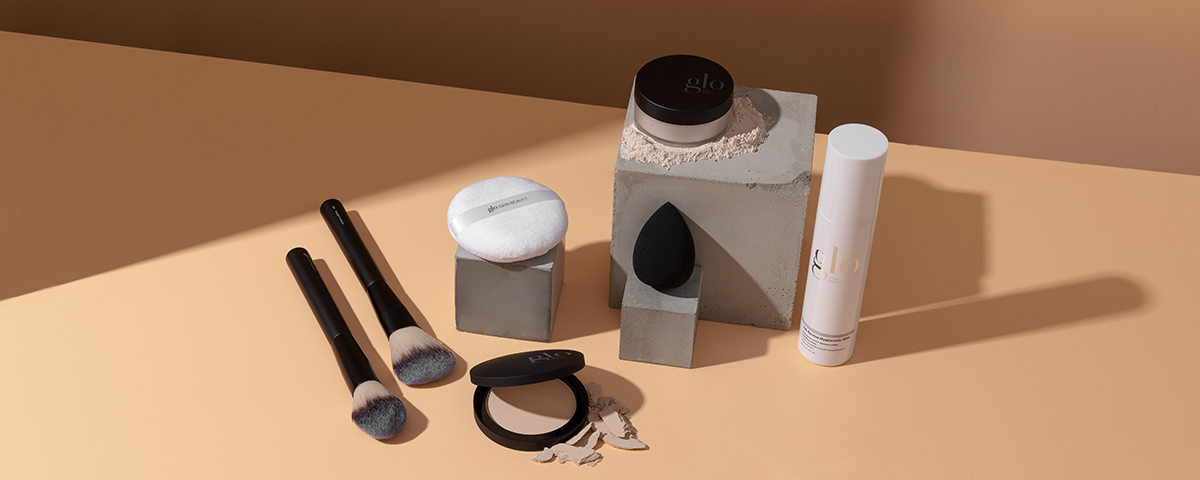When it comes to building the perfect base makeup, few products are as essential yet confusing as face powders. The most debated? Compact powder vs loose powder. Both help you achieve a polished look and enhance makeup longevity, but they differ in texture, usage, and performance—especially important for Indian skin tones and humid climates.
Whether you’re a beginner stepping into makeup or someone seeking halal, cruelty-free, and vegan beauty alternatives, understanding the difference between compact and loose powders can transform your routine. Here’s everything you need to know to make the right choice.
What Is Compact Powder?
Compact powder is a pressed powder that comes in a compact case—usually with a mirror and sponge applicator—making it ideal for quick fixes. It is designed to control oil, provide coverage, and give your face a matte or semi-matte finish. These powders are pigmented, meaning they come in specific shades to match your skin tone and can even be used alone for light coverage.
Compact powders are formulated for everyday use, especially when you’re on the move. They’re perfect for touch-ups during work hours, post-gym routines, or when you want a natural finish without layering foundation.
Best for: Oily or combination skin, daily touch-ups, portable use.
What Is Loose Powder?
Loose powder is a finely milled, lightweight powder usually housed in a jar. It’s typically applied using a fluffy brush or powder puff. Unlike compact powders, loose powders are less pigmented and are used more for setting makeup than for providing coverage.
They help absorb excess oil, prevent creasing around fine lines, and give a smooth, airbrushed finish. Many makeup artists prefer loose powder for professional settings due to its ability to lock makeup in place and control shine for hours.
Best for: Long-wear makeup, special occasions, oily to dry skin types depending on the formula.
Key Differences: Compact Powder vs Loose Powder
| Feature | Compact Powder | Loose Powder |
|---|---|---|
| Texture | Pressed, solid, thicker | Finely milled, soft, lightweight |
| Coverage | Medium to full | Sheer to medium |
| Portability | Compact, travel-friendly | Less portable, can spill |
| Application | Easy and quick with sponge | Requires brush or puff |
| Finish | Matte or semi-matte | Smooth, natural, airbrushed |
| Best Use | Daily touch-ups | Setting base makeup for longevity |
If you’re looking for ease and convenience, go with compact powder. For a more refined, studio-like finish, loose powder is ideal.
Compact Powder vs Setting Powder: Know the Difference
Compact powders are often confused with setting powders, but they serve different functions. Compact powders are colored, provide additional coverage, and are used for quick fixes. Setting powders, usually loose and translucent, are made to seal in your makeup, reduce oil, and give a flawless finish.
- Setting Powder: Used after foundation; often translucent and ultra-light.
- Compact Powder: Used for coverage and mattifying; available in skin tone shades.
Use setting powder if your goal is to make your makeup last longer without changing its color. Use compact powder when you want coverage and portability in one product.
Types of Loose Powders
Understanding the different kinds of loose powders helps you make a smarter choice:
- Translucent Loose Powder: Works for all skin tones, great for oil control and makeup setting without adding color.
- Tinted Loose Powder: Offers light coverage and a hint of color, can be worn alone or over foundation.
- Finishing Powder: Ideal for photography or events, this powder blurs imperfections and gives a filtered effect.
Translucent Powder vs Compact Powder
Here’s another common dilemma. Translucent powder is colorless and sheer, while compact powder is tinted and offers noticeable coverage.
| Feature | Translucent Powder | Compact Powder |
|---|---|---|
| Shade Range | Universal, colorless | Multiple shades for skin tones |
| Coverage | Minimal to none | Moderate to full |
| Finish | Natural, matte | Matte or satin |
| Best For | Final step, oil control | Quick coverage, all-day wear |
Choose translucent powder if you want oil control without altering foundation tone. Go for compact powder if you’re looking for coverage with convenience.
Choosing Based on Skin Type
Oily Skin
- Compact Powder: Helps absorb oil and mattify the skin throughout the day.
- Try: Iba Must Have Velvet Matte Compact Powder
- Loose Powder: Choose oil-absorbing translucent powders for shine control.
Dry Skin
- Compact Powder: Go for one with hydrating ingredients to prevent patchiness.
- Try: Iba Perfect Look Long Wear Mattifying Compact Powder
- Loose Powder: Look for non-drying formulas with skin-soothing ingredients.
Why It Matters in Your Base Routine
Both compact and loose powders play an important role in a complete base makeup routine:
- Lock in foundation and concealer
- Minimize the appearance of pores
- Control shine and oiliness
- Improve makeup wear time
- Smooth out fine lines and texture
Whether you wear foundation daily or prefer a minimal look with just BB cream, using the right powder ensures your makeup stays fresh for longer—especially in Indian weather conditions.
Clean Beauty and Conscious Choices
If you prioritize ethical and skin-friendly beauty, opt for powders that are halal-certified, vegan, and cruelty-free. Brands like Iba Cosmetics offer powders that don’t just perform well—they also align with your values. These formulas are free from animal derivatives, parabens, and harsh chemicals, making them ideal for everyday wear without compromising skin health.
Final Verdict: Which One Should You Pick?
Your perfect powder depends on your skin type, makeup routine, and lifestyle:
- Choose Compact Powder if you want quick coverage, matte finish, and travel-friendly packaging.
- Choose Loose Powder if your goal is long-lasting makeup with a seamless, lightweight finish.
You can also use both—compact powder for daily touch-ups and loose powder for setting your base during special occasions. Either way, prioritize skin-friendly, ethical formulations that suit your tone and texture.
